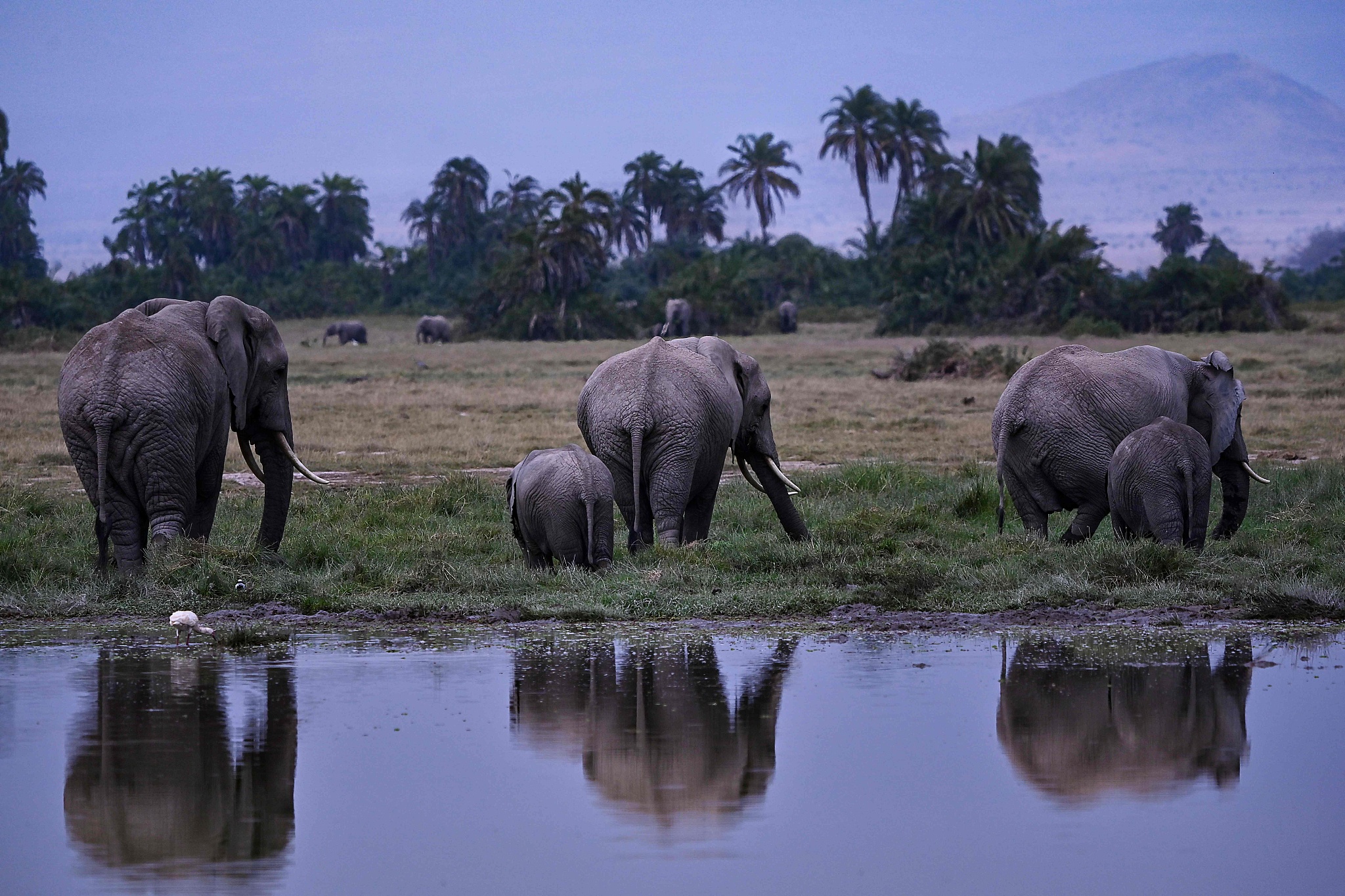Kenya's elephant population has gradually increased at an annual rate of approximately 2.8 percent over the last three decades amid declining poaching, a wildlife research institute said on April 11.

Elephants graze near one of the seasonal lakes on World Elephant Day at the Amboseli National Park (365 kilometers southeast of the capital Nairobi) near Oloitiktok in Kajiado east county, August 12, 2020. /CFP
Elephants graze near one of the seasonal lakes on World Elephant Day at the Amboseli National Park (365 kilometers southeast of the capital Nairobi) near Oloitiktok in Kajiado east county, August 12, 2020. /CFP
The state-owned Wildlife Research and Training Institute (WRTI) said that the country has experienced about a 96 percent decline in poaching, with more than 386 elephants being lost to poaching in 2013 compared to 11 elephants poached last year.
"This success is attributed to enhanced government initiatives to combat poaching and trophy trafficking, and the continued collaboration with national and international partners to stop the trade in ivory," WRTI said in a statement.
It added that while Kenya acknowledges that poaching was the major cause of the decline in the past, increasing human population and the subsequent change in land tenure and land-use systems have led to the constriction of elephant range, loss of dispersal areas and corridors, leading to heightened interaction between elephants and people, mostly resulting in conflict.
"Today, human-elephant conflict (HEC) and loss of elephant corridors and dispersal areas are the main challenges facing elephant conservation and management in Kenya," it said.
(If you want to contribute and have specific expertise, please contact us at nature@cgtn.com.)
Source(s): Xinhua News Agency

